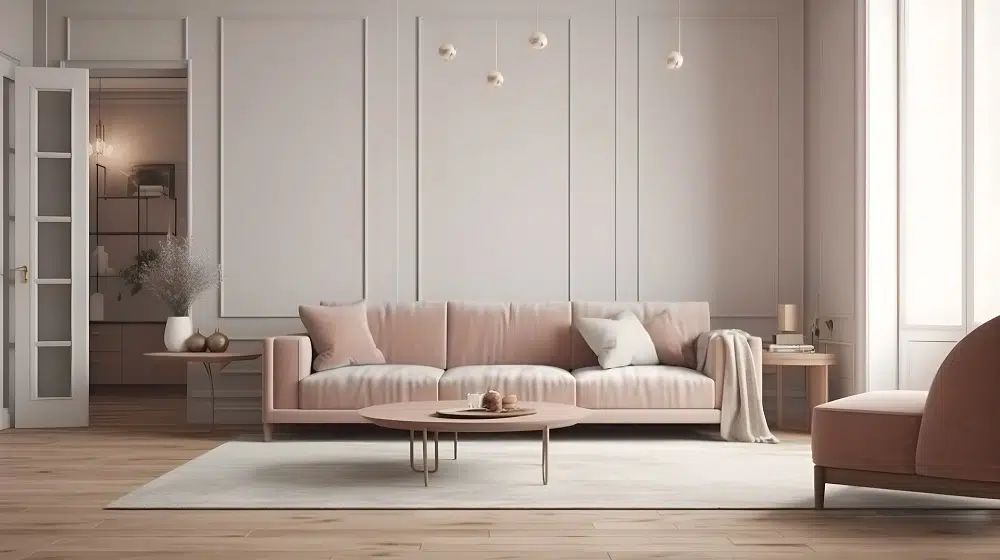Minimalism in interior design has become more than a style trend; it’s a philosophy about how we live and interact with our surroundings. The appeal lies in stripping away excess, celebrating light, and creating harmony through balance. For many, walking into a minimalist home feels like exhaling after a long day—a chance to clear mental clutter along with the physical.
But what makes minimalist interiors so powerful, and why do they continue to resonate with modern homeowners seeking calm in a fast-paced world?
A Philosophy Rooted in Simplicity
Minimalism finds its origins in post-war design movements, but its relevance today is stronger than ever. As life becomes increasingly saturated with notifications, visual noise, and constant distraction, people crave environments that allow for pause. Clean lines, open layouts, and subdued palettes encourage a slower rhythm and greater clarity.
The guiding principle is “less, but better.” Every piece in a minimalist interior is intentional—chosen for its form, function, or emotional resonance. This approach ensures that what remains is meaningful, creating both beauty and practicality.
The Role of Space and Light
Space is the most luxurious element in minimalist design. Interiors emphasize openness, letting natural light define the atmosphere. Instead of filling every corner, designers focus on allowing negative space to breathe.
Think of it like scrolling through your favorite inspirations or even browsing lifestyle slots online: the appeal comes not from overwhelming choice, but from carefully curated selections that feel tailored and thoughtful. The same concept applies at home—where fewer, better choices elevate the whole experience.
Materials That Speak for Themselves
Minimalist interiors often rely on natural materials such as wood, stone, and linen. These textures provide warmth and tactility, preventing the style from feeling sterile. By letting materials speak for themselves, the design celebrates authenticity.
Polished concrete floors paired with a single oak dining table, or crisp white walls offset by a raw linen sofa, demonstrate how simplicity doesn’t mean compromise. Instead, it’s about refinement and restraint, the quiet luxury of choosing quality over quantity.
Function as an Art Form
Minimalist interiors remind us that functionality can be beautiful. Streamlined furniture, hidden storage solutions, and uncluttered surfaces create a sense of order without sacrificing comfort. This practicality appeals to those who value efficiency while also craving elegance.
It’s a similar satisfaction to navigating digital experiences that are intuitive and seamless. Just as well-designed platforms—whether shopping, design inspiration, or browsing slots online for décor ideas—thrive on clarity, minimalist spaces thrive when each element feels effortless and intentional.
The Emotional Impact
Minimalism isn’t just about how a space looks—it’s about how it makes you feel. Walking into a serene, uncluttered room can have a calming effect, reducing stress and promoting mindfulness. With fewer distractions, it’s easier to focus on the essentials, whether that’s enjoying a quiet cup of coffee or connecting with loved ones over dinner.
Designers often speak about the emotional resonance of a space, and minimalism excels here. It prioritizes calm, clarity, and purpose—qualities that are increasingly rare in daily life.
Sustainable by Nature
Another reason minimalism resonates today is its alignment with sustainable living. By choosing fewer, higher-quality pieces, homeowners naturally reduce consumption. This approach supports craftsmanship and durability rather than mass production and disposability.
Minimalism also encourages mindfulness in purchases. When every piece must earn its place, impulse buying becomes less tempting, and personal style becomes more intentional.
Conclusion
Minimalism is far more than a design trend—it’s a lifestyle choice. It’s about curating an environment that reflects clarity, balance, and purpose. In an era of overstimulation, minimalist interiors provide a counterpoint: spaces that invite calm and authenticity.
Whether through carefully chosen materials, the luxury of space, or the power of light, minimalism transforms homes into sanctuaries. Much like exploring curated inspirations or browsing lifestyle content and design slots online, the joy lies in the thoughtful selection rather than the sheer number of options.
In the end, minimalism teaches us that the ultimate luxury is simplicity—spaces where we can truly breathe, recharge, and feel at home.





